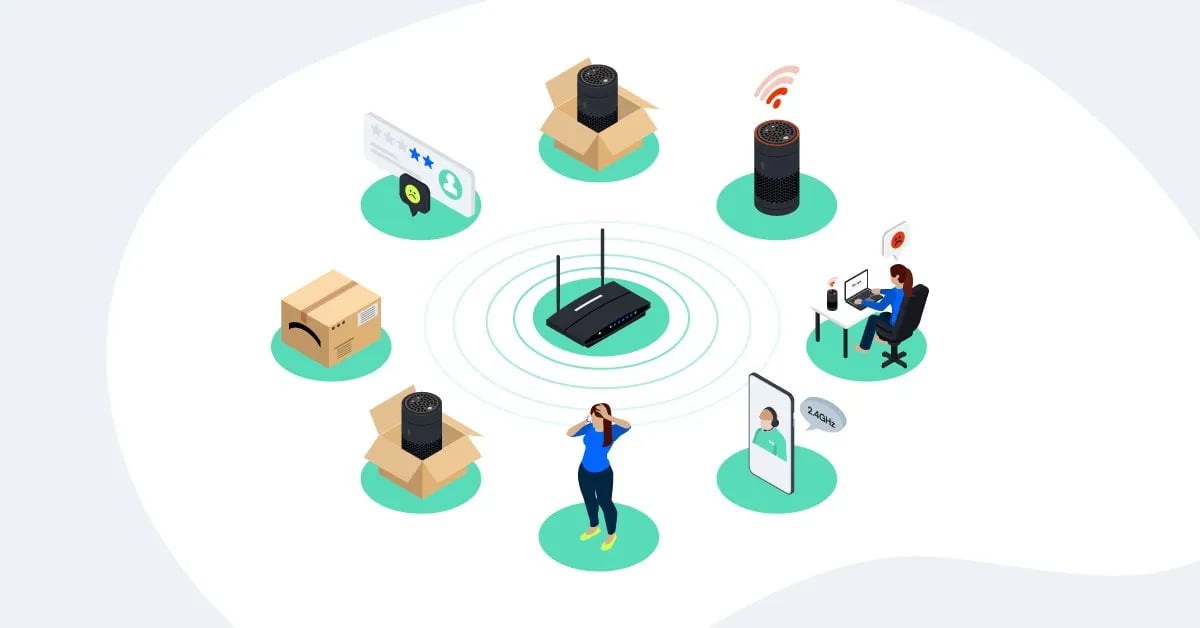When customer experience breaks down, part 1: The early stages of the smart home product customer journey

When it comes to a quality customer experience for a smart home device, the ideal scenario is simple: The customer buys your product, sets it up, uses it, and loves it. Maybe they even like it so much that they leave you a positive review or talk it up to their friends, family, or coworkers.
But what happens if the device doesn’t work when they first set it up? What if they can’t troubleshoot it on their own and need to call in for assistance? While the customer may think the problem is with the product, more often than not, the issues they’re experiencing have to do with their home’s WiFi setup. And here’s where the breakdown in the customer journey begins.
51% of issues with smart home devices are due to loss of wireless connectivity.
The early stages of a customer experience breakdown
Imagine that you have a customer who purchases their new smart home device online, excitedly unpacks it, and carefully follows the setup instructions. The rest of their experience goes something like this:
- Product failure. After following the setup instructions, the customer tries multiple times to get the device to work with no luck. They consider calling the customer support number but dread the idea of being put on hold for ages and then having to explain the problem in-depth, possibly to more than one agent.
- Time spent self-diagnosing the issue. The customer decides to figure out the issue on their own, watching YouTube videos and scouring online help forums related to their product. After several hours, they still can’t get the device to work.
- Lengthy troubleshooting with support. The customer gives in and calls support in a state of frustration. As they’d initially feared, they’re forced to wait on hold and spend time going through a troubleshooting laundry list with a support agent. While the agent is knowledgeable about the product, they don’t understand the nuances of WiFi connectivity. Finally, after some troubleshooting suggestions from the support agent, the customer is able to get the device working. For now.
- Problem isn’t resolved. Once the customer is off the phone, they experience frequent connectivity interruptions. They’re convinced that the product is once again at fault–not realizing that the fact that they have 15+ connected devices and haven’t upgraded their WiFi plan could be the real issue.
After all of this, the customer is back to square one with a device that doesn’t work. And while it has little to do with the product itself, in the mind of the customer, the device–and your brand–has let them down.
The impacts on your brand
Even in these earlier stages of the customer journey, issues like the ones we’ve outlined above could have a significant impact on your business and brand, namely:
- Negative brand perception. A negative experience right out of the gate could result in early churn, with the customer abandoning your brand altogether.
- Risk of return. Customers may simply decide that the product is faulty and return it.
- Increase in support call volumes: Resourcing and managing support costs become an issue when the number of calls due to WiFi connectivity significantly increases.
Add to this, lengthy call times drive up costs for your support teams and can lead to poor NPS scores due to customer frustration.
Opportunities to improve the customer experience
While customer support calls will always be part of the smart home product reality, there are opportunities to create quality customer experiences at every stage in the customer journey:
- Educating the customer early: Provide educational material within the product package or on your company website for troubleshooting possible WiFi issues if the device isn’t working.
- Reducing friction on calls: Provide call-back options and waiting times, and invest in omni-channel or diagnostic tools for both your agents and customers.
- Empowering support teams: Invest more in agent training, add dedicated WiFi experts to your support team, and encourage agents to request access to historical customer data to provide valuable insights.
Finding the right balance
At the end of the day, the more focus you put on the customer’s experience, the better positioned you are to prevent product returns and reduce customer churn. By focusing on the earliest touchpoints your customer has with your product, you may be able to eliminate the need for a first call and increase customer satisfaction from the start.
